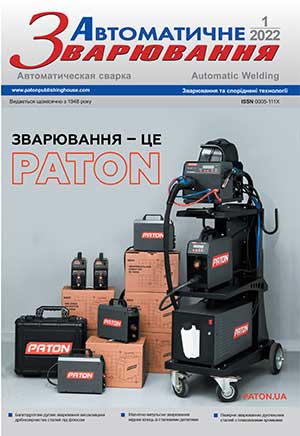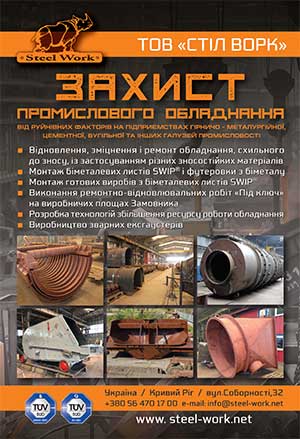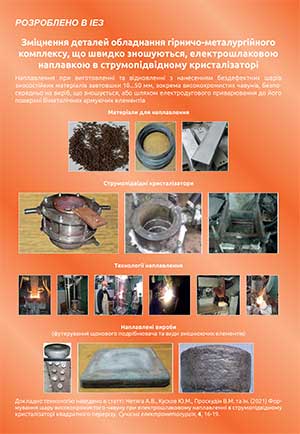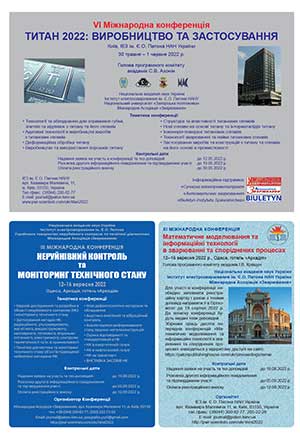| 2022 №01 (04) |
DOI of Article 10.37434/as2022.01.05 |
2022 №01 (06) |
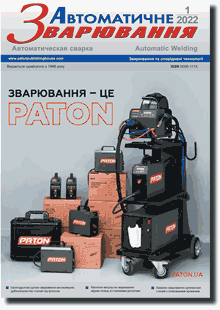
"Avtomatychne Zvaryuvannya" (Automatic Welding), #1, 2022, pp. 33-40
Mathematical modeling of residual stresses in composite welded joints of WWER-1000 reactor vessel cover with CPS nozzles
A.A. Makarenko, O.V. Makhnenko
E.O. Paton Electric Welding Institute of the NAS of Ukraine. 11 Kazymyr Malevych Str., 03150, Kyiv, Ukraine. E-mail: office@paton.kiev.ua
The composite welded joints of the WWER-1000 reactor vessel cover with the nozzles of the control and protection system (CPS) are the object of the strength calculation when justifying the extension of the service life of NPP units. Mathematical modeling by the finite element method of the kinetics of residual stress formation during welding of the WWER-1000 reactor vessel cover with CPS nozzles and their redistribution as a result of post-welding heat treatment was performed. The effect of preheating on the microstructural phase transformations in HAZ of the main material of the cover and the nozzle was studied. The main features of the distribution of residual stresses in the composite welded joints after welding and heat treatment are determined. 14 Ref., 1 Tabl., 12 Fig.
Keywords: composite welded joint, reactor vessel cover, WWER-1000, HAZ, microstructural phase transformations, residual stresses, heat treatment, mathematical modeling
Received: 20.10.2021
References
1. Makhnenko, O.V., Saprykina, G.Yu. (2002) Role of mathematical modeling in solving problems of welding dissimilar steels (Review). The Paton Welding J., 3, 14-25.2. Makhnenko, O.V., Kozlitina, S.S., Dzyubak, L.L., Kravets, V.P. (2010) Risk of formation of carbides and α-phase in welding of high-alloy chrome-nickel steels. Ibid., 12, 5-8.
3. Wenchun Jiang, Wanchuck Woo, Yun Luo, J.H. Li. (2017) Residual stress distribution in a dissimilar weld joint by experimental and simulation study. J. of Pressure Vessel Technology, 2(139), 011422-1-011422-10. https://doi.org/10.1115/1.4033532
4. Dean, Deng, Kazuo, Ogawa, Shoichi, Kiyoshima et al. (2009) Simplified methodology to compute the residual stresses in a dissimilar metal welded pipe with considering cladding, buttering and post weld heat treatment. Computat. Mater. Sci., 47, 398-408. https://doi.org/10.1016/j.commatsci.2009.09.001
5. Kasatkin, O.G., Tsaryuk, A.K., Skulsky, V.Yu. et al. (2007) Method for improving local damage resistance of welded joints in NPP pipelines. The Paton Welding J., 3, 27-30.
6. 1160.02.02.000 PS: Certificate of vessel. Upper block YC00В01. 2.1 [in Russian].
7. 1160.02.18.000TB1: Cover. Table of quality control [in Russian].
8. 1160.02.18.000ТB2: Cover. Table of quality control [in Russian].
9. Makhnenko, V.I. (1976) Calculated methods of investigation of welding stresses and strains. Kiev: Naukova Dumka [in Russian].
10. Yurjev, S.F. (1950) Specific volumes of phase in martensitic transformation of austenite. Moscow, Metallurgizdat [in Russian].
11. (1989) PNAE G-7-009-89: Equipment and pipings of nuclear power plants. Welding and surfacing. Fundamentals. Moscow, Energoatomizdat [in Russian].
12. SOU NAEK 159: Assurance of technical safety. Welding and surfacing of equipment and pipings of nuclear power plants with WWER reactors. Technical requirements.
13. Rabotnov, Yu.N. (1966) Creep of structural elements. Moscow, GIFML [in Russian.
14. Margolin, B. Z., Gulenko, A. G., Kursevich, I. P., Buchatskii, A. A. (2006) Modeling for fracture in materials under long-term static creep loading and neutron irradiation. Pt 2. Prediction of creep rupture strength for austenitic materials. Strength of Materials, 38(5), 449-457. https://doi.org/10.1007/s11223-006-0064-z
Advertising in this issue:
The cost of subscription/purchase order journals or individual articles
| Journal/Currency | Annual Set | 1 issue printed |
1 issue |
one article |
| TPWJ/USD | 384 $ | 32 $ | 26 $ | 13 $ |
| TPWJ/EUR | 348 € | 29 € | 24 € | 12 € |
| TPWJ/UAH | 7200 UAH | 600 UAH | 600 UAH | 280 UAH |
| AS/UAH | 1800 UAH | 300 UAH | 300 UAH | 150 UAH |
| AS/USD | 192 $ | 32 $ | 26 $ | 13 $ |
| AS/EUR | 180 € | 30 € | 25 € | 12 € |
| SEM/UAH | 1200 UAH | 300 UAH | 300 UAH | 150 UAH |
| SEM/USD | 128 $ | 32 $ | 26 $ | 13 $ |
| SEM/EUR | 120 € | 30 € | 25 € | 12 € |
| TDNK/UAH | 1200 UAH | 300 UAH | 300 UAH | 150 UAH |
| TDNK/USD | 128 $ | 32 $ | 26 $ | 13 $ |
| TDNK/EUR | 120 € | 30 € | 25 € | 15 € |
AS = «Automatic Welding» - 6 issues per year;
TPWJ = «PATON WELDING JOURNAL» - 12 issues per year;
SEM = «Electrometallurgy Today» - 4 issues per year;
TDNK = «Technical Diagnostics and Non-Destructive Testing» - 4 issues per year.






